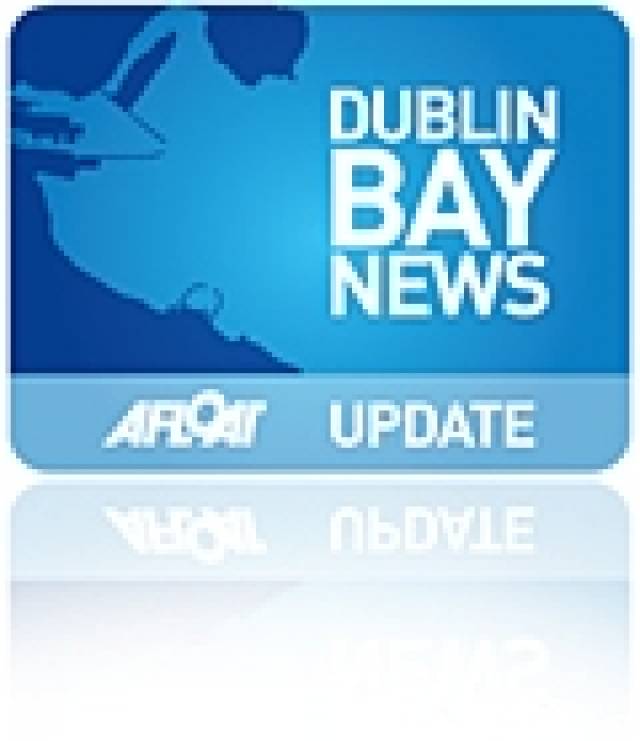#bullisland – Dublin Port Company today announced a proposal to transfer its ownership of a significant and strategic portion of Bull Island to Dublin City Council to hold in perpetuity for the people of Dublin and future generations.
Dublin Port Company will also partner with Dublin City Council and Fáilte Ireland in a feasibility study for a new interpretative centre and international visitor experience at the UNESCO designated Bull Island biosphere, and will contribute towards the development of a master plan for Bull Island following the conclusion of the study. In addition, Dublin Port Company will allocate up to €1.2 million towards the cost of the study, master plan and new services or facilities identified for Bull Island.
Dublin Port Company owns a portion of Bull Island closest to the port and adjacent to the Royal Dublin Golf Club measuring approximately 10.5 hectares, and located at the western side of the island beside the North Bull Wall. At present, the lands owned by Dublin Port Company are used for recreation, including gaining access to Dollymount Strand, thus providing an important link to the rest of Bull Island.
Bull Island was originally created following port engineering works in the 1800s; the construction of the Great South Wall and North Bull Wall resulted in the creation of Bull Island as it is known today.
The proposal will provide a legacy that enriches Bull Island as a precious natural resource for Dubliners and visitors to the City and has been welcomed by the Minister for Transport, Tourism & Sport Leo Varadkar and Dublin City Council. The proposal will be included as a community gain element to Dublin Port Company's planning application to provide new and deeper berths in the Alexandra Basin and on the river towards the east of Dublin Port. This is the first significant project for development under the company's Masterplan, which provides the framework for the future development of Dublin Port to 2040.
Minister for Transport, Tourism and Sport, Leo Varadkar said: "I commend Dublin Port for this initiative and for its ongoing contribution to the city both as an economic force and as the custodian of our river and bay. Dublin Port's gift to the people of Dublin will be welcomed by all and remembered for generations."
Eamonn O'Reilly, Chief Executive, Dublin Port Company said: "Dublin Port Company has a long tradition of developing and supporting projects which benefit local communities, the City of Dublin, its citizens and visitors. The Bull Island community gain initiative is an important element of our first major Masterplan project. This project will deliver more than three kilometres of new deeper berths for passenger, freight and cruise ships, all within the Port's existing footprint. Dublin is Ireland's cruise capital with more than 100 cruise ships calling this year. The project will allow the largest cruise ships to berth right up at East Link Bridge. An important part of the project is the community gain proposal to transfer ownership of Dublin Port Company's land holding in Bull Island to Dublin City Council and for Dublin Port Company to contribute funding towards new facilities that will attract local and foreign visitors to Bull Island. We are commencing a consultation exercise on this proposal and we look forward to hearing everyone's views."
Welcoming the proposal, Owen P Keegan, Dublin City Manager, Dublin City Council, said: "The City Council welcomes this valuable contribution from Dublin Port Company to the conservation and enhancement of the Bull Island. The Island is designated by UNESCO as a Biosphere reserve and it is a unique resource for the City. A feasibility study is being carried out to consider the potential for redeveloping the Visitor Centre on the island as a flagship project for natural heritage interpretation. This project and the on-going conservation of wildlife on the island will be much strengthened by this new partnership with Dublin Port Company."
Under its Masterplan, Dublin Port Company committed to maximise the utilisation of the port's existing berths and lands. The reconfiguration of Alexandra Basin will deliver on this commitment and will provide deeper berths to service larger freight, passenger and cruise ships in the years ahead.
Dublin Port Company is encouraging the local and wider Dublin communities to share their views on the 'community gain' proposal for Bull Island by Friday, 18th October 2013. Specific questions to guide submissions can be found at: www.dublinportabr.ie Interested parties are invited to make their submissions to [email protected] or Charlie Murphy, Dublin Port Company, Alexandra Road, Dublin 1.

























